All about flowering houseplants

The best home decoration is indoor flowering plants. But in order for them to grow up beautiful and healthy, they need to be properly cared for. In this article, we'll take a closer look at indoor flowering plants and learn how to care for them.
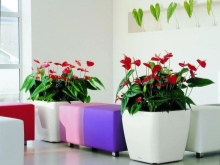
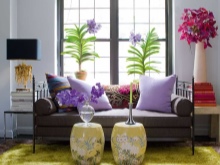
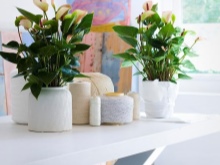
Types and varieties
There are many different types of indoor flowering plants. Among them there are hanging, and tall, and compact, and large, and perennial specimens - the species diversity is striking in its richness.
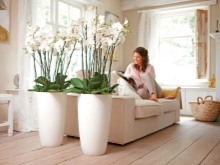
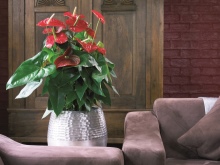
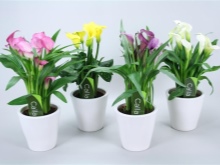
Short flowering time
Among indoor plants, there are many subspecies that do not differ in the longest flowering period. Most of these crops bloom for no more than 1 month. Many of them bloom in August or September.
- Camellia. This is a beautiful indoor plant that can become a spectacular interior decoration. However, it should be borne in mind that this culture has won the fame of a capricious and demanding green pet. Camellia blooms from November to December. This plant does not tolerate dryness and too warm air very badly. In such conditions, a blooming indoor pet is at risk of becoming seriously ill.
- Indian azaleas. These are lovely flowers that bloom at the end of September. Flowering bushes look very similar to a charming air cloud. Indian azaleas require the obligatory pinching of young shoots, otherwise the period of their flowering is reduced even more.
- Cyclamen Persian. The specified handsome man can delight with his flowering only during the period from autumn to winter. It is recommended to place the pot with the crop in question on a cool windowsill with diffused lighting. In such conditions, cyclamen can please the owners with more abundant and rich flowering. You can water the culture with exceptionally soft water from the edge of the pot so that it does not fall on the leaves or tuber of the plant.
- Hyacinth. This is a very beautiful, showy plant, which is hard not to pay attention to. Many flower growers love hyacinths, but they bloom no more than a month, and often only 10-14 days are allotted for this period, which is very little. The plant in question belongs to the asparagus family, has a bulbous rhizome, as well as a straight and short stem. Differs in neat linear sheet plates.
- Croton. The ornamental plant has a poisonous sap. Very badly tolerates watering with cold water, as well as drafts. Differs in not the most attractive flowering.
Moreover, the inflorescences that appear take away all the necessary elements from the croton, which affects its appearance.
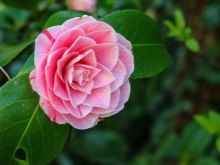

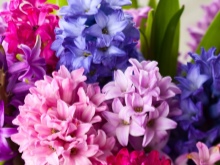
Long-flowering
Most flower growers (both beginners and experienced) still more often choose long-flowering crops for growing. Such plants delight the eye longer, and many of them belong to the group of completely unpretentious and not demanding.
- Spathiphyllum. Otherwise, this plant is called "female happiness." The culture in question can delight the owners with flowering several times a year. The duration of this process usually ranges from 1 month and can be up to 6 months. The pet is unpretentious in care, therefore it is chosen for growing by many growers who do not like too capricious types of indoor plants. "Women's happiness" is often used to decorate not only living quarters, but also various offices and offices - the flower fits seamlessly into any setting.
- Flowering begonia. If you want to decorate the interior with a spectacular and colorful plant, you should take a closer look at the elegant flowering begonia. Usually, this lovely plant blooms from early summer to autumn, but there are many ways to extend this life stage of a flower. Begonia is replete with beautiful buds of various warm colors that delight the eyes of the hosts and their guests. If the begonia is properly watered and high-quality fertilizing is applied in a timely manner, it can bloom throughout the year.
- Anthurium. This is a truly gorgeous houseplant with large leaf blades with a glossy surface. The flowers of the culture are very similar to small hearts. With proper care, anthurium can bloom successfully all year round. The flower needs constantly moist soil. It feels good in the shade, but it develops best and fastest in the conditions of southern or western windowsills.
- Balsam. A handsome balsam can become a chic interior decoration. It can bloom all year round too. The plant is very fond of good lighting, but in no case should direct sunlight fall on it - they can seriously harm the flower. Balsam loves moisture and not only in the soil - it is allowed to spray the leaf plates of the plant with water, especially if there are hot and sultry days outside the window.
- Geranium... A well-known classic of all window sills is this unpretentious plant. Geranium does not require complex and specific care, loves light (within reason), as well as abundant, but not too frequent watering. Ideal temperature conditions for this popular pet are between +8 and +25 degrees Celsius. It always blooms with good care. The flower grows well on the street, therefore, with the onset of the summer season, it is recommended to take the pot of geraniums to the balcony, loggia or garden. If you do not have enough modest houseplants with small flowers, you should take a closer look at this beauty.
- Coleria. It is a very beautiful and variegated plant that usually blooms from July to November. The green pet looks interesting, but at the same time it is unpretentious in matters of care. The plant is very fond of high levels of air humidity, but its leaves should not be sprayed with water in any case.
Pots with this flower should only be placed in trays with water and expanded clay.
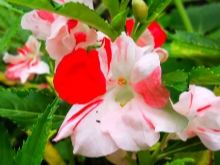
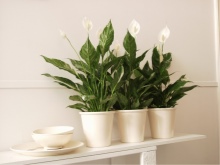
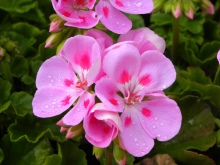
Ampelny
Among indoor flowering plants, there are a lot of spectacular ampelous subspecies, distinguished by their excellent appearance and delicate colors. Let's get acquainted with some popular representatives of this species.
- Bell. Many people are very fond of making bells because they have a delicate and attractive appearance. At home, in most cases, an equal-leaved flower is grown. The culture loves to be in a place with sufficient lighting.
- Dipteracanthus. A beautiful ampelous culture, characterized by a cute and neat appearance. Dipteracanthus is a low, practically creeping, semi-shrub. The flowers of this green pet can be colored with white, pink or purple stripes.
- Alsobia. A spectacular and graceful ampelous plant that looks especially beautiful if it is in fashionable hanging pots or baskets. The flower is characterized by the presence of a large number of small "tendrils" on which leaf rosettes grow. Alsobia reproduces very easily at home.
- Lobelia. This is an ornate plant perfect for northern balconies. Belongs to the bellflower family. It has very beautiful and delicate blue or blue bell flowers. Usually flowers grow compact - no more than 2 cm.
- Tradescantia... A wonderful ampelous flower that feels great at home.The plant boasts rapid growth, high decorative qualities, simple agricultural technology. It is not at all difficult to take care of this flower - even a novice florist can cope with it without any problems. But you need to remember that Tradescantia is moisture-loving, easily amenable to crown formation and takes root very quickly.
- Campanula... A popular flower among gardeners, characterized by attractive flower colors - blue, white, lilac. Campanula has a lot in common with a bell.
- Setcreasia purpurea... Another spectacular representative of the ampel type. This is an evergreen perennial, the shoots of which can grow up to 1 m. The flower is indoor, has wide leaf plates up to 10 cm long. The front side of the leaves is distinguished by a violet shade with an edge. This pet blooms for a long time - from mid-spring to the end of the summer season. The inflorescences are small in size and are characterized by a pink-purple color.
- Basella. An unusual indoor flower with a high decorative effect. Under natural conditions, it grows in the United States, India, New Guinea, Africa. Basella is also called "Malabar spinach".
This is a vine that prefers warm conditions. It has ovoid leaf blades, but there are also heart-shaped leaves with pointed ends. They grow up to 12 cm.
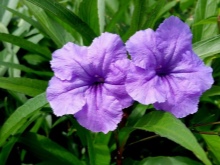
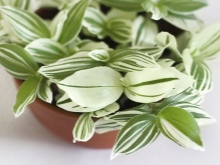
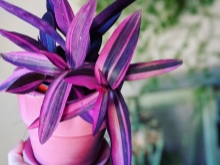
For dark rooms
Among indoor flowering plants, there are many shade-loving subspecies. Let's consider some of them.
- Aspidistra... It is a shade-tolerant houseplant. In a home, it is recommended to expose it away from other indoor crops. When growing the plant in question, you need to remember that it must be protected from direct sunlight. Most often, the culture is placed away from the window, but the aspidistra should not be removed into deep shade either.
- Saintpaulia. The second name is the uzambar violet. This plant needs enough light, but direct sunlight can seriously harm, leaving noticeable burns. It is best to keep the flower in light partial shade at all times.
- Clivia... Another shade-tolerant plant that does well in indoor conditions.
As in many other cases, the clivia must be well protected from direct sunlight.

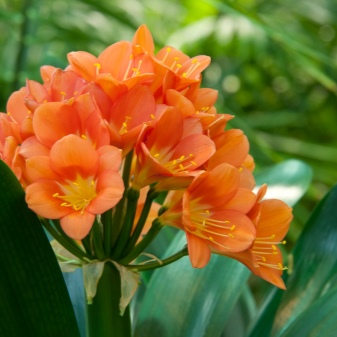
Tree-like
Let's take a closer look at some tree-like houseplants.
- Yucca. An interesting tree plant that blooms in the summer season. It belongs to the agave family, comes from the subtropics. An adult plant is very similar to a palm tree. At home, it can reach a height of 4 m in height.
- Aralia. It is an evergreen perennial. It can reach a height of 1.5 m. It has large leaf plates of a rounded structure. The foliage is glossy, has an attractive light green color. Aralia loves bright lighting, but feels best in cool and well-ventilated areas.
- Rapis. Relatively small, especially when compared to the examples described above. The average height of this tree-like pet reaches 150 cm. It prefers good lighting, belongs to the palm family.
It is necessary to provide the rape with moderate watering.

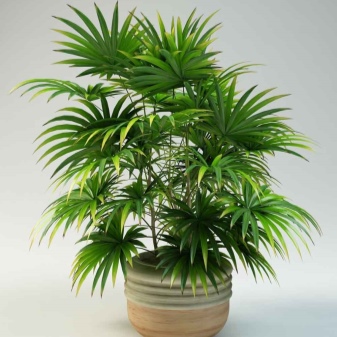
Rare exotic
It is quite possible to grow unusual plants of exotic types at home. Consider several well-known and popular options.
- Tillandsia blue. Comes from the bromeliad family. Differs in a beautiful and unusual spike-shaped inflorescence of a pink hue. Differs in slow growth. Needs moderate watering and light partial shade, as well as a high level of humidity.
- Calathea saffron... A pretty plant, the main advantage of which is long flowering. Flowers grow on even peduncles. The upper half of the leaves is dark green in color, and the lower half is greenish-purple.
- Stapelia variegated... It is a succulent plant with original spotted or striped flowers.The latter exude not the most pleasant smell that many people associate with rotten meat. The characteristic scent attracts flies to pollinate.
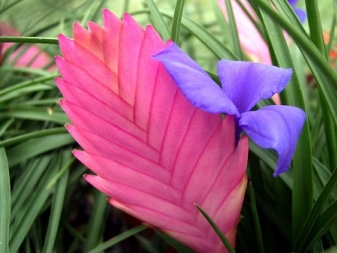
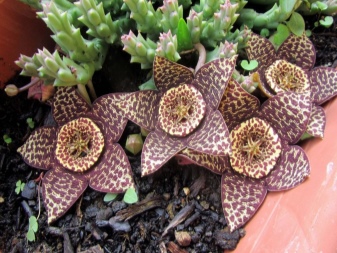
Most popular colors
Most often, people decide to grow various crops at home, since they have beautiful flowers in attractive colors. Consider which types are the most colorful and spectacular.
Purple
Such interesting cultures can boast of an expressive purple color:
- gloxinia - can be painted by nature in a deep purple color;
- brunfelsia - undemanding plant with large purple flowers of dark and light tones;
- bell - This widespread plant attracts attention due to the charming blue-violet color, characteristic of the "Mayi" variety.
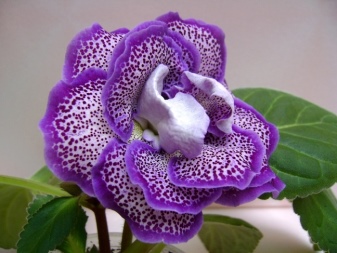
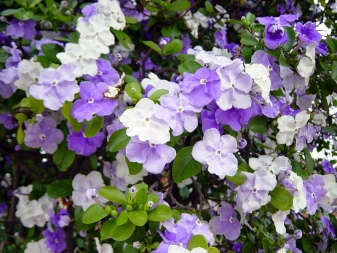
Pink
Many flower growers want to place delicate pink flowers in the apartment, they are able to transform the interior, making it softer and more comfortable.
- Dipteracanthus - a bright and attractive plant, the flowers of which can be full of rich pink stripes;
- Euphorbia mile - can also show off with flowers, showing the transition from white to pink;
- Ehmeya - an unusual ornamental plant, the inflorescences of which can attract a lot of attention due to the spectacular pink color (a characteristic feature of the Aechmea fasciata cultivar).
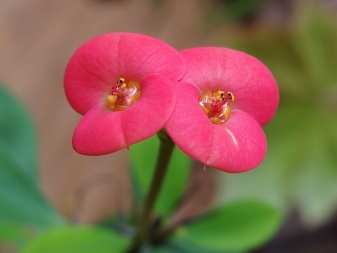
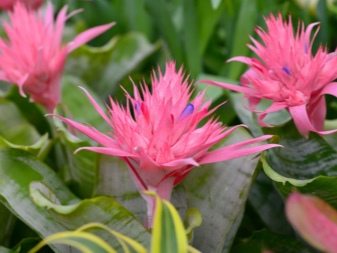
Lilac
- Ginura - an interesting and spectacular houseplant, numbering more than 50 species, many of which have a characteristic lilac color.
- Crocus - can have very expressive lilac flowers, which are the first heralds of the spring season.
- Lilies - chic flowers, the beauty and colors of which are literally breathtaking, are not capricious and demanding in their care.

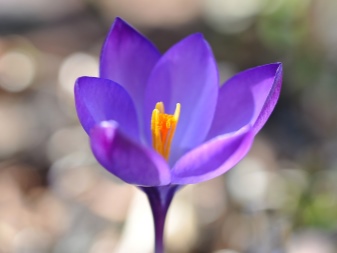
Blue
Indoor beauties with blue flowers can boast of unprecedented beauty.
- Brovallia is beautiful - a lush undersized bush - no higher than 30 cm. It has dark green leaves and bright blue flowers in huge numbers.
- Phlox paniculata - a bulbous plant with pretty flowers, one of its kind is able to create a spring mood.
- Ahimenes aquamarine - An abundantly flowering plant with beautiful blue flowers can be grown as an ampelous crop.
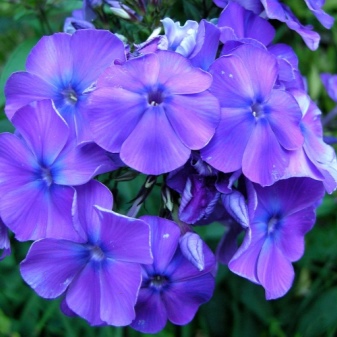
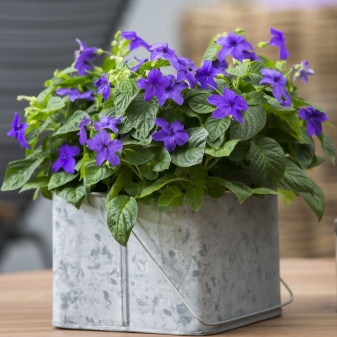
White
The following houseplants can have white flowers:
- brunfelsia - it can show off with snow-white flowers, but there are also variants of other colors: yellow or purple;
- hoya - otherwise called wax ivy, it is a liana that needs strong support;
- balsam - a tall plant with an elongated stem, but there are also more compact hybrid subspecies.
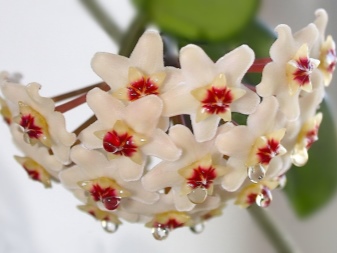
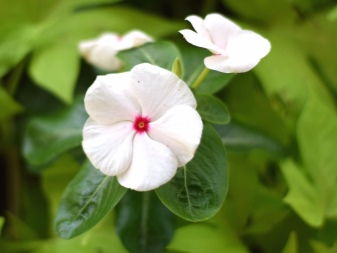
Blue
Consider some of the best blue flowered indoor plants:
- lisianthus - an elegant plant with spectacular poppy flowers of blue color;
- piggy - a lovely plant with sky-blue flowers, looks truly excellent;
- sollya - a modest but beautiful plant that can grow up to a maximum of 1 meter.


Red
If you are thinking of decorating the interior with bright red flowers, you should take a closer look at such interesting cultures:
- vallot - a variegated perennial of the bulbous type, has thin graceful leaves, capable of growing up to 60 cm in length;
- pentas - under indoor conditions, a hybrid of this attractive plant is grown, it is an evergreen shrub, the height of which often reaches 50 cm;
- anthurium - an amazing houseplant, which has a bright and juicy color, perceives light well and does not tolerate drafts.
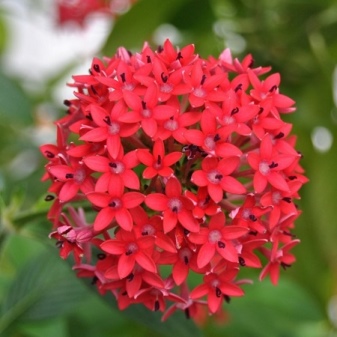
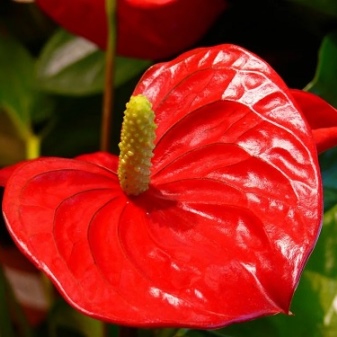
Which fertilizers are suitable?
Indoor plants need proper feeding. For such beautiful green pets, it is recommended to buy quality mineral fertilizers sold in liquid form... It is advisable to select such compositions that will suit a specific variety of indoor flowers.You can use potash, nitrogen or complex types of fertilizers, depending on the needs and age of the flowering indoor crop.
It is imperative to apply fertilizers of one type or another, following the instructions that are usually present on the original packaging with the composition.
Do not experiment with the addition of fertilizers, as this can end very badly for flowering plants.
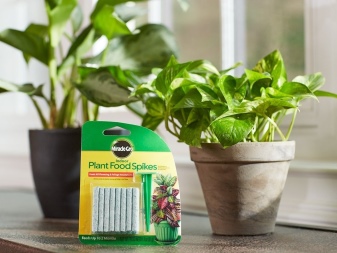
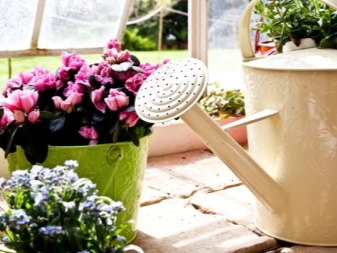
Possible care problems
Growing various flowering plants at home, A florist can face a number of common problems.
- Leaves dry... Most often, the root of the problems is hidden in insufficient watering and dry soil, or in waterlogging of the soil due to poor drainage.
- Plants do not bloom. Usually this problem occurs for several reasons: improper lighting, inappropriate soil mixture, disturbed flower nutrition, poor pot, lack of a dormant period, pinching and pruning, old age.
- The buds are falling. The problem is often associated with the influence of drafts on the plant, watering with cold water, too dry soil in a pot, low humidity in the room, improper feeding.
- Diseases and pests. Houseplants can suffer from various pests and diseases, for example: rot (leads to an excess of moisture and nitrogenous fertilizers), spotting (the appearance of dead leaf areas), bacterial cancer (growths appear on shoots and roots - most often the plant dies), whitefly (small white moth, removed with garlic tincture), aphids (small insects, feed on plant sap, removed by treatment with insecticides).
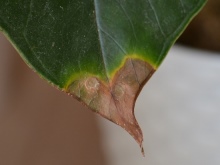
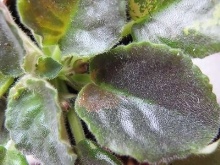
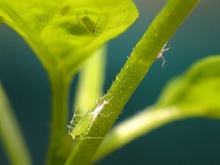
What to choose?
The choice of the houseplant you like depends only on the preferences of the owners. Choose those crops that you like more in terms of external parameters. Pay attention to the scent that green pets exude.... For many growers, this is an important criterion. If you don't have enough time, and you are not ready to constantly deal with houseplants, it is better to choose an unpretentious species that blooms almost all year round.
If you can afford to pay enough attention to capricious green beauties, then you can pick up a more demanding, but exotic and colorful option.
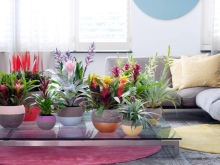

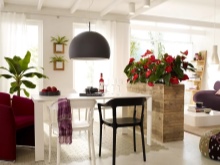
In the next video, you will find a selection of the most unpretentious indoor plants.































The comment was sent successfully.